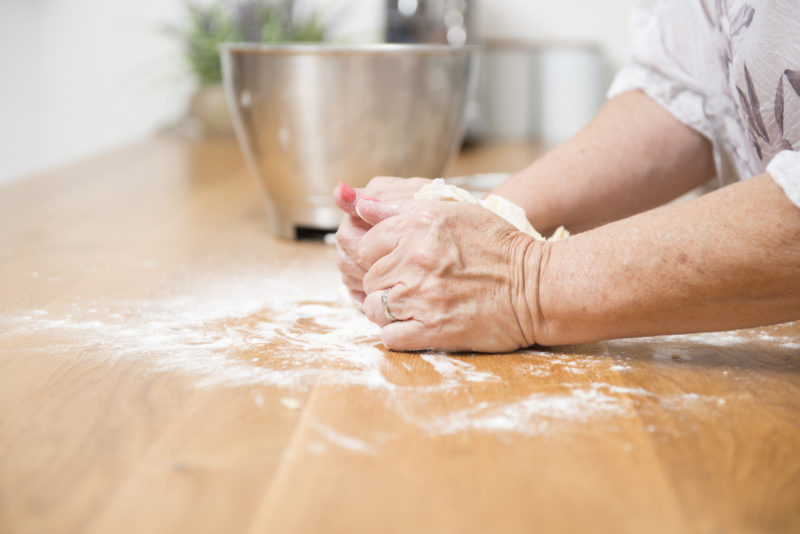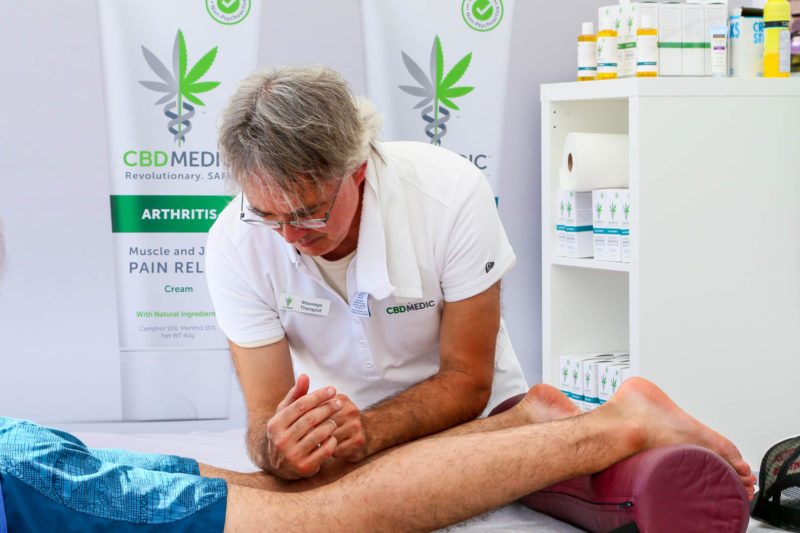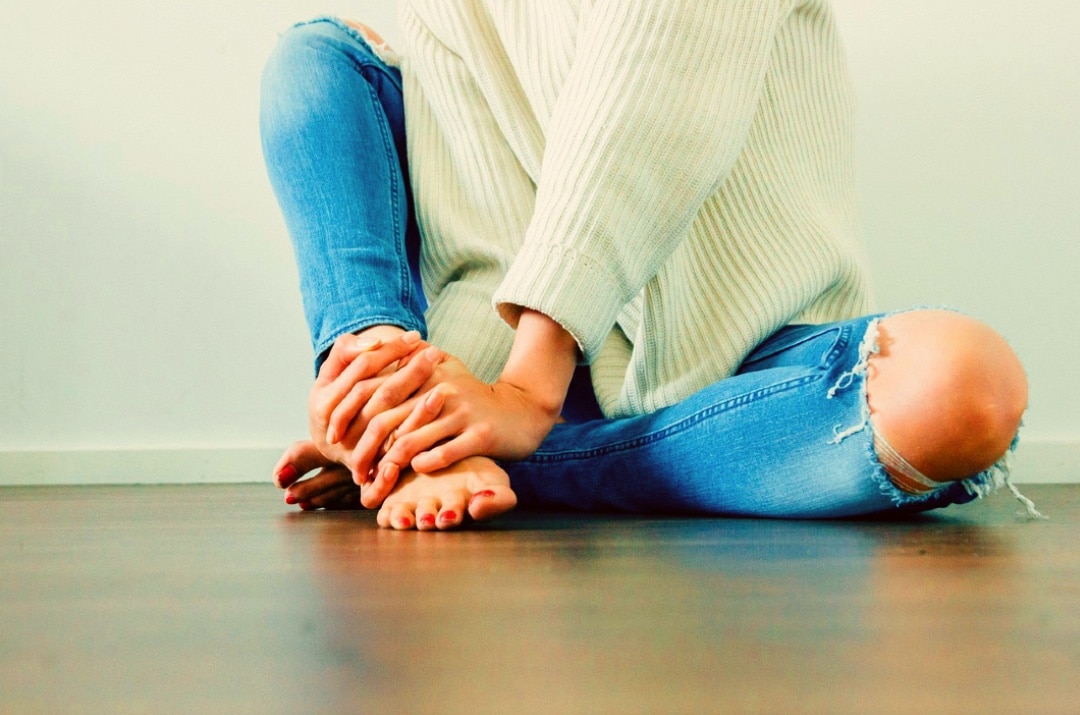You might be surprised to learn that the human body has 360 movable joints. It’s a fact most of us would never consider in our daily lives. However, if you’ve experienced osteoarthritis pain, you’re painfully aware of each joint. When your joints are locked stiff and throbbing, there’s no way to ignore them.
To understand how to get a handle on osteoarthritis pain, you’ll want to know the symptoms, what causes it, and the best ways you can treat it.
About Osteoarthritis: The Basics
Osteoarthritis is the most common arthritis condition. In the US alone, osteoarthritis affects 30 million people.
Your joints are covered with cartilage, which is the smooth, elastic connective tissue that supports flexible movement and cushions your joints from friction. Over time, your cartilage wears down, giving bones less protection. The damage caused by the friction and erosion between a joint’s cartilage and bone is called osteoarthritis.
It can affect any joint in your body, but it tends to affect the most active joints which bear the most stress, like the hands, knees, hips and spine.
Diagnosing Osteoarthritis
Osteoarthritis is a progressive condition, meaning it intensifies over time. Certain factors can make it worse. Being overweight can cause osteoarthritis flare-ups because the body isn’t designed to hold extra stress on weight-bearing joints, but it doesn’t stop there. Sedentary lifestyles, injuries or repetitive motions such as overly demanding physical work and certain sports activities can also aggravate the condition. The unfortunate news is that there’s no way to reverse osteoarthritis; cartilage doesn’t grow back and bone erosion cannot be corrected.
Symptoms that should send you to the doctor include:
- Stiffness
- Pain
- Tenderness
- Loss of flexibility
- Hard lumps (called bone spurs) around the joint
- Grating sensations that you can hear or feel when you move the joint
EXPERIENCE THE PAIN RELIEF REVOLUTION™
Osteoarthritis Sufferers: You Are Not Alone
 According to the Arthritis Foundation, half of all adults will develop symptoms of knee OA at some point in their lives; one in four will have hip OA by their 85th birthday, and one in 12 people over age 60 will experience hand OA.
According to the Arthritis Foundation, half of all adults will develop symptoms of knee OA at some point in their lives; one in four will have hip OA by their 85th birthday, and one in 12 people over age 60 will experience hand OA.
Women are more likely than men to suffer from osteoarthritis. While the causes are unclear, many specialists believe differences in knee anatomy, variations in mechanics and hormonal influences may all play a role. Some people may be genetically susceptible to the disease due to defective cartilage or poorly formed joints.
Living and Coping With Osteoarthritis
If you have osteoarthritis, you know the pain can be debilitating. There’s no denying OA pain can significantly reduce your quality of life. The pain and associated limited mobility may force you to miss out on social events, work, sports, and other activities. This, in turn, may lead to depression. Vulnerable osteoarthritic joints are more likely to be injured, which can set you back even further.
Common ways to slow down the advancement of osteoarthritis
Fortunately, you can take steps to slow osteoarthritis progression, decrease pain, extend your range of motion, and minimize the disease’s effects, such as:
- Being treated with occupational and/or physical therapy – This strengthens joints damaged by the disease and teaches you the proper ways to move.
- Undergoing thermotherapy (heat or cold treatments) – Heat relaxes muscles and improves circulation; cold numbs pain, reduces joint swelling and constricts blood vessels.
- Maintaining a healthy weight – Staying within a healthy weight range removes unnecessary physical stress on your joints.
- Doing regular exercises so that natural circulation can deliver vitalizing nutrients – This keeps your joints in good shape.
- Taping joints or using elastic limb braces – Taping joints temporarily secures your limbs during movement.
Learning the correct techniques for simple tasks may take the pressure off painful or susceptible joints. For example, using your thigh muscles to pick up heavy objects instead of bending at the back reduces the weight burden on your spine.
Relieving Osteoarthritis Pain
Osteoarthritis sufferers have a number of ways to relieve joint pain. The first of these is oral pain medication.
There are three primary families of oral pain medications:
- Analgesics such as acetaminophen.
- Non-steroidal anti-inflammatory drugs (NSAIDs) such as ibuprofen, aspirin or naproxen.
- Opioids, available with a doctor’s prescription, including codeine-containing Tylenol oxycodone such as Percocet.
It’s important to consult with your doctor and pay attention to potential side effects when you’re taking oral pain medications. Keep a lookout for side effects such as:
- Bleeding
- Stomach pain or ulcers
- Heartburn
- Headaches
- Dizziness
- Hypertension
- Kidney or liver problems
It’s also essential to be wary of potential interactions between oral pain meds and any other drugs you may be taking. Opioids are particularly problematic because they are addictive and show minimal benefit to osteoarthritis, especially given their risks.
Your doctor can perform corticosteroid injections which can help reduce inflammation, specifically in the troubled areas. Because of the risks, side effects, and the fact that repeated cortisone shots may cause the cartilage to deteriorate, Mayo Clinic recommends that patients limit cortisone injections to no more than three or four times a year, with at least six weeks between each treatment. In extreme cases, some patients can undergo artificial joint replacements in areas such as the hips and knees. The downside is that these procedures are expensive, they pose a risk of infection, and they require rehabilitation in order to return to reasonable function. Give careful consideration before making the decision to replace damaged joints.
Natural Osteoarthritis Pain Relief
 The good news is that there are a number of natural pain-alleviation methods available to OA sufferers. More and more patients are recognizing the trade-offs of attempting a natural approach to alleviating pain over prescription drugs, OTC medications, surgery, injections, and other solutions.
The good news is that there are a number of natural pain-alleviation methods available to OA sufferers. More and more patients are recognizing the trade-offs of attempting a natural approach to alleviating pain over prescription drugs, OTC medications, surgery, injections, and other solutions.
Diet and nutrition
It should go without saying that food is your medicine. It’s the fuel which keeps you going and the oil that keeps your engine going strong. This is why it’s so important to maintain a healthy diet as part of your pain management regimen.
While there are many philosophies to choose from when it comes to nutrition, the US Arthritis Foundation recommends following a Mediterranean diet of whole grains, vegetables, fish, olive oil, and fruit to reduce inflammation and keep your weight in check.
Some people also swear by nutritional supplements which combine soybean and avocado oils. These sorts of supplements are widely used throughout Europe to treat hip and knee osteoarthritis pain. Advocates claim these products boast anti-inflammatory effects. Some research has shown that they may prevent or slow the progression of joint damage. However, many patients who have tried such supplements did not experience significant relief.
Ultimately, you should speak with a nutritionist or a naturopath to help you plan the right diet for your unique needs.
Complementary and alternative medicine
You can supplement your treatment plan with complementary and alternative medicine such as: massage therapy, chiropractic care, and naturopathy. Some people swear by acupuncture as well, but the jury is still out on that one. Some sufferers who have tried acupuncture therapy claim it has helped them, while others report beneficial effects that are no better than a placebo.
A study published in 2012 took a sample size of 125 discovered the benefits of massage therapy on osteoarthritis located in the knees. The study specifies the importance of 60 minutes of massage therapy once a week for maximum results.
Similarly, chiropractic care has also been proven beneficial due to improvements in balance and speed demonstrated by sessions of manipulation, mobilization, and muscle stretching of the afflicted area. By utilizing manual therapy, patients tend to notice a decrease in pain, along with an increase in range of motion and function.
But manual therapies alone are not the only way to treat physical pain.
Nutrition, herbs, and exercise also play a vital role in healing. And that’s the principle of naturopathic medicine, which is gaining traction in the west. Naturopathy is a blend of healing traditions and scientific research.
Hydrotherapy specifically has demonstrated benefits to those suffering with OA. As implied by the “hydro,” hydrotherapy utilizes water in its many forms, to perform healing and treatment. Studies have proven hydrotherapy to be beneficial for the treatment of OA, but due to the sample size being smaller, we cannot make broad claims.

CBDMEDIC™ Arthritis: Fast osteoarthritis symptom relief
CBDMEDIC™ Arthritis is a line of natural over-the-counter solutions featuring the choice of a topical pain-relief ointment or a moisturizing hand cream for OA patients. The product is effective for temporary targeted pain relief at the locations that hurt without the effects and risks associated with oral medications. CBDMEDIC blends natural OTC-approved active ingredients camphor and menthol with skin conditioning emollients including jojoba oil and CBD hemp oil from the Cannabis sativa L. plant, a THC-free, non-psychoactive component of the plant. Massaging the joint area with CBDMEDIC Arthritis cream or ointment can bring safe, powerful, and effective relief.
Staying in the Game, Even With Osteoarthritis
If you suspect you have OA, you should consult with your doctor. Although it can be frustrating, having osteoarthritis does not banish you to the sidelines. Doctors recommend staying active and eating right. Choosing the best pain relief for your situation could make a huge difference in relieving pain and helping you get back to living your life.
Disclaimer: This information is for educational purposes only. It has not been approved by the FDA to diagnose, treat, prevent, cure, or mitigate any diseases or conditions. We use CBD in our products for cosmetic purposes only. We can’t make claims regarding “does CBD oil help with osteoarthritis”.

